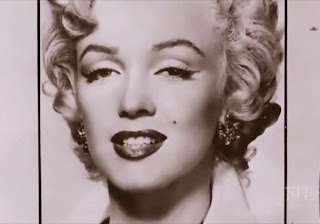Author's Note: This article was reposted in the GMA News Online website. You may read the post, here .
From the pasty white and plump standards during the Victorian times up to the tanned complexion popularized by Hollywood in the 1950s, we, humans have changing ideas of beauty.

From the pasty white and plump standards during the Victorian times up to the tanned complexion popularized by Hollywood in the 1950s, we, humans have changing ideas of beauty.

But this
doesn’t seem to apply in this country of Malay descent. Our standard of beauty
is fixed on the mestiza standard
since the 16th century: that one has to have fair skin to be
beautiful. Obviously, this proves how ingrained the Western-standard of beauty
is to us Filipinos.
Historically
speaking, it’s one of those cultural influences we got from our Spanish
colonizers. In the Hispanic society where Filipinos are considered second-class
citizens in their own country, the archetype of beauty is the standard of the conquistadores. That yardstick where indios get to be ashamed of their own
skin color. No wonder we had people like Doña Victorina who abusively uses
facial powder just to look more like the Caucasian colonizers.

After
the Spaniards came the Americans. And this pigment-less ideal of beauty was
carried over, too. And with the advent
of technology and mass media; this kind of love for Western standard of beauty
was preserved by the Pinoys up to this day. That kind of thinking where we
consider the colonizers’ standards as the better and superior ones we have to
imitate.
 |
| On a sidenote: I was surprised to know that dark-skinned girls are joshed in Thailand, too. |
That’s
just how this white skin fascination of the Pinoys came to be. The more mestiza you look, the more you’re
considered as beautiful in this country of a hundred million
Malay-slash-Pacific islanders.
There even was a controversy on Spanish chocolate bars called “Filipinos” in 1999. Accordingly, those chocolates resemble us Pinoys
who are “brown on the outside, white on the inside”. Indeed, it’s quite unfortunate
that the standards of beauty applied to Filipino women are still based on skin
color.

In this
country, it is like a mortal sin to have a darker skin tone. It seems that the racist
in the Pinoy still equates blackness as dirty and unclean. Having a darker
shade of melanin is like something one should be ashamed of.
Many
Pinays feel the pressure to have white skin. Pinays want to be white; Pinays need to be white. In fact, dark skin is
frowned upon to the point of calling them baluga,
negra, uling, ita, kulay-duhat, etc. It can even be noticed
with the common Tagalog expression: Mahiya
ka naman sa balat mo! (You should be ashamed of your skin!) Or jokes like
“Black is beautiful. But too much is
charcoal”. Having a darker complexion makes one a laughing stock here.

A tour
around Manila’s thoroughfares makes one realize that there’s not one
dark-skinned endorser on the billboards. Products that are endorsed by fair-skinned
gods and goddesses, most of them are of mixed-bloods. Even the American tourist
who made “20 Things I Hate About the Philippines” video also noticed this
Filipino fascination towards fair skin.
From
the day we learned to use our eyes to watch the idiot box, we are bombarded
with images that project a nearly unattainable physical ideal. The images form
the foundation upon which our generation’s self-esteem and body image will be
based. As an example, our brand of showbiz is dominated by white-skinned tisoys and tisays. That’s why it’s a no-brainer that the masses adore these
mixed-bloods. But if one would really think about it, it so happened that these
gorgeous people had the “luck of the genetic draw”.
And these
false ads don’t help either. Some tell us that we need their products to
unleash our “natural whiteness”. Television commercials feature whitening
product endorsements of aquiline-nosed celebrities who already are endowed with white skin. One product promises
“kutis artista” (Complexion of actresses).
Now this makes me wonder: just what exactly is “kutis artista”? Well for one, Tado is an artista. And so is Tsokoleit.
Now this makes me wonder: just what exactly is “kutis artista”? Well for one, Tado is an artista. And so is Tsokoleit.
(For
the continuation of this article, please click here)
Photo Credit:
“Dark
Skin”. Screenshot from the Thai movie, “Crazy Little Thing Called Love”.
"Tsokoleit", picture taken from http://contents.pep.ph/images2/news/322a74e38.jpg.
"Tsokoleit", picture taken from http://contents.pep.ph/images2/news/322a74e38.jpg.


Comments
Post a Comment
After commenting, please subscribe by adding your e-mail to receive free updates from this weblog. Thank you.